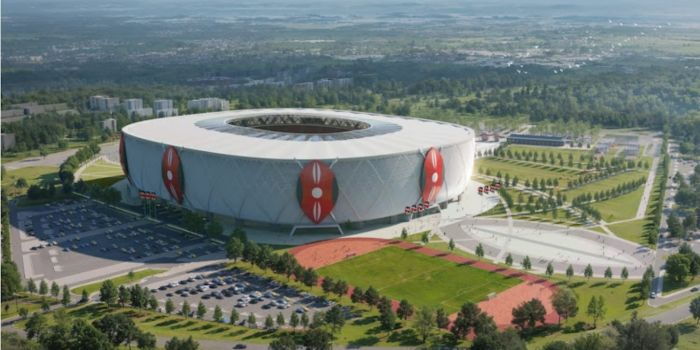Kenya to Host Africa’s First-Ever Stadium With a Retractable Roof
Kenya is on track to set a new milestone in African sports infrastructure with the Talanta Stadium, a multi-billion-shilling project that will become the first stadium on the continent fitted with a retractable roof once completed.
The Ksh44 billion state-of-the-art facility is being constructed in readiness for the 2027 Africa Cup of Nations (AFCON), which Kenya is co-hosting.
During a project update on Thursday, September 11, Interior Principal Secretary Raymond Omollo confirmed that the retractable roof is one of the stadium’s standout features, designed to transform it into a vibrant multi-use venue for sports, cultural events, and community activities.
Benefits of the Retractable Roof
Unlike a fixed roof, a retractable roof can be opened or closed depending on weather conditions or event requirements, making the venue highly versatile. According to PS Omollo, this feature offers several major advantages:
- Multi-purpose flexibility: With the ability to adapt to different conditions, Talanta Stadium will not only host football matches but also concerts, exhibitions, cultural festivals, and even national celebrations.This year-round usability is expected to significantly boost revenue streams for stadium operators.
- Protection against weather disruptions: The quick-open and close function ensures that events are rarely cancelled or interrupted due to rain, wind, or extreme sun. This provides fans and organisers with planning certainty and reduces the risk of financial losses from postponed events.
- Improved spectator experience: On bright, sunny days, the roof can be opened to create an outdoor stadium atmosphere. During poor weather, it can be closed to ensure comfort. When shut, the roof also enhances acoustics, amplifying crowd noise and heightening the excitement during matches.
- Better natural playing conditions: Retractable roofs are especially important for stadiums with natural grass pitches. They allow sunlight and airflow to maintain healthy turf while shielding it from harsh weather when needed. This reduces dependence on artificial turf, which is still common in older stadiums. To support growth in shaded areas, operators can also use supplemental grow lights.
- Energy efficiency: By maximising natural light and ventilation, the roof helps lower energy consumption, making the stadium more sustainable in the long run.
The Engineering Behind the Roof
PS Omollo further revealed that the construction of Talanta Stadium’s roof involves the use of a computerised hydraulic tension cable lifting system—an advanced technology that is rarely applied worldwide.
This system uses a combination of hydraulic jacks and high-strength steel cables, all synchronised by a sophisticated computer program that monitors positioning and tension in real-time to ensure accuracy and safety.
It allows engineers to assemble the roof structure on the ground before lifting it into place, a method that cuts construction time and costs while reducing risks for workers.
Globally, only a handful of stadiums use this technology. While Omollo noted that Kenya would become the fifth nation to adopt it, further research shows that at least eight stadiums worldwide have incorporated similar retractable roof systems, spread across more than four countries.
This makes Kenya’s adoption a rare achievement in modern stadium design and a landmark for Africa.
World-Class Features of Talanta Stadium
Beyond the roof, Talanta Stadium is being equipped with cutting-edge facilities to match international standards. These include:
- Seven modern changing rooms for players and officials.
- Luxurious VIP lounges and hospitality areas.
- State-of-the-art locker rooms for athletes.
- Advanced media centres to support local and global coverage.
- VAR (Video Assistant Referee) booths and goal-line technology, aligning the stadium with FIFA standards for fair play.
The stadium’s design ensures that it can host high-profile matches and deliver seamless live broadcasts to millions of fans worldwide.
Completion Timeline
The government has set an ambitious target for the stadium’s completion. It is expected to be ready by December this year or early 2026, well ahead of the 2027 AFCON tournament.
Once finished, Talanta Stadium will not only be a symbol of Kenya’s growing capacity in sports infrastructure but also a regional hub for entertainment, culture, and innovation.
Join Government Official WhatsApp Channel To Stay Updated On time
https://whatsapp.com/channel/0029VaWT5gSGufImU8R0DO30


